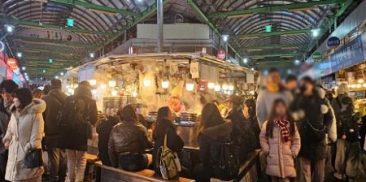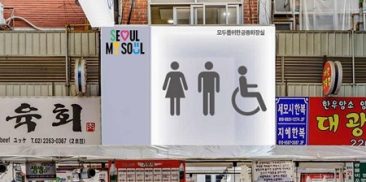首爾文化遺產
-
Innovation of the distribution of agricultural and fisheries products, “Garak Market”
-
首爾文化遺產 報名日期作者SMG 观看次数1,530
To modernize Korea’s dilapidated agricultural and fisheries distribution facilities and improve the distribution system, Korea’s rule of “one market per city” was abolished in 1976, and the Act on Distribution and Price Stabilization of Agricultural and Fishery Products was enacted to transform the existing distribution structure, which had become bogged down by trade on consignment, into an auction-based system. As a result, Garak Market, which sells fruit, vegetables, and fisheries products, was opened in June 1985 as the first public wholesale market in Korea.
A project to modernize the market was launched in 2011 and its first phase has already been completed. In August, merchants will move into the new space, called Garak Mall. Trading volume has reached 1.7 times the volume initially planned, with a surplus of 7,000 tons a day, and thus the market had to be expanded. However, when it was built 30 years ago as the nation’s first public market, Garak Market was the largest in Asia.
Songpa District, an area favorable for logistics as it is located adjacent to an expressway, was chosen as the site for the market, and the Wholesale Market Corporation (now the Seoul Agro-Fisheries and Food Corporation) began operations in 1984 with 47 buildings featuring a total floor area of 261,787 square meters (79,190 pyeong) on a lot of 542,920 square meters (164,232 pyeong). Since it brought the first auctions and large-scale parking lots to Korea, Garak Market has grown rapidly into the most famous marketplace in Gangnam. With a current daily trading volume of 7,300 tons, trading amount of about KRW 10.4 billion, and 130,000 visitors, Garak Market is now the largest public wholesale market in Korea.
Seoul Metropolitan City and the Seoul Agro-Fisheries and Food Corporation plan to renovate the old, narrow facilities by 2024, expecting to reduce transportation and loading costs by about KRW 80 billion annually. At 2 a.m. in the morning, when most people are asleep, the market is crowded with merchants buying and selling vegetables, fruit, and fisheries products brought in from across the nation. By achieving major innovations of the distribution structure, Garak Market has raised the value of the sweat and hard work of producers and provided consumers with an abundance of food for 30 years.






